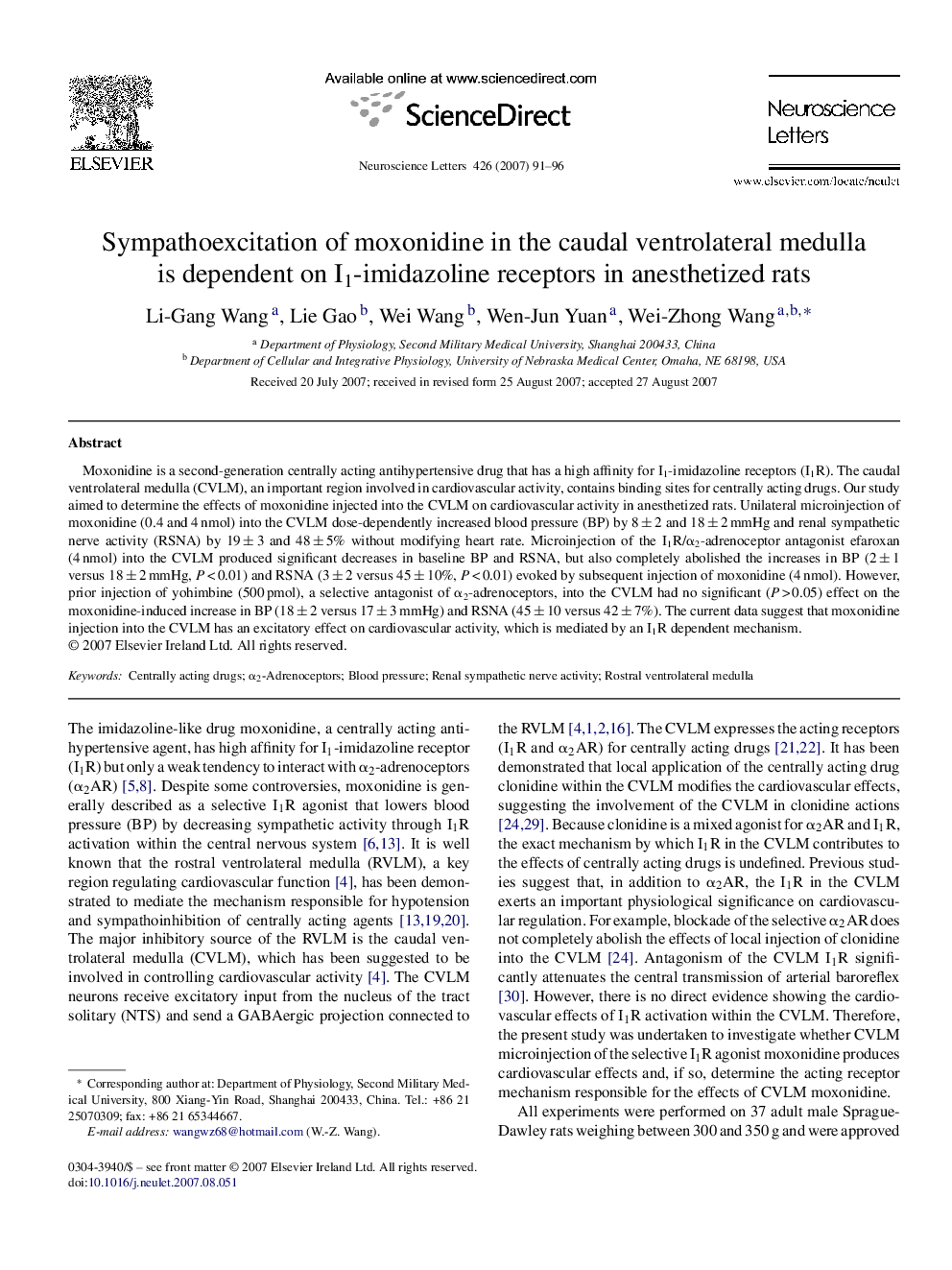| Article ID | Journal | Published Year | Pages | File Type |
|---|---|---|---|---|
| 4348955 | Neuroscience Letters | 2007 | 6 Pages |
Abstract
Moxonidine is a second-generation centrally acting antihypertensive drug that has a high affinity for I1-imidazoline receptors (I1R). The caudal ventrolateral medulla (CVLM), an important region involved in cardiovascular activity, contains binding sites for centrally acting drugs. Our study aimed to determine the effects of moxonidine injected into the CVLM on cardiovascular activity in anesthetized rats. Unilateral microinjection of moxonidine (0.4 and 4 nmol) into the CVLM dose-dependently increased blood pressure (BP) by 8 ± 2 and 18 ± 2 mmHg and renal sympathetic nerve activity (RSNA) by 19 ± 3 and 48 ± 5% without modifying heart rate. Microinjection of the I1R/α2-adrenoceptor antagonist efaroxan (4 nmol) into the CVLM produced significant decreases in baseline BP and RSNA, but also completely abolished the increases in BP (2 ± 1 versus 18 ± 2 mmHg, P < 0.01) and RSNA (3 ± 2 versus 45 ± 10%, P < 0.01) evoked by subsequent injection of moxonidine (4 nmol). However, prior injection of yohimbine (500 pmol), a selective antagonist of α2-adrenoceptors, into the CVLM had no significant (P > 0.05) effect on the moxonidine-induced increase in BP (18 ± 2 versus 17 ± 3 mmHg) and RSNA (45 ± 10 versus 42 ± 7%). The current data suggest that moxonidine injection into the CVLM has an excitatory effect on cardiovascular activity, which is mediated by an I1R dependent mechanism.
Keywords
Related Topics
Life Sciences
Neuroscience
Neuroscience (General)
Authors
Li-Gang Wang, Lie Gao, Wei Wang, Wen-Jun Yuan, Wei-Zhong Wang,
